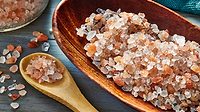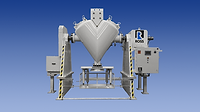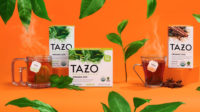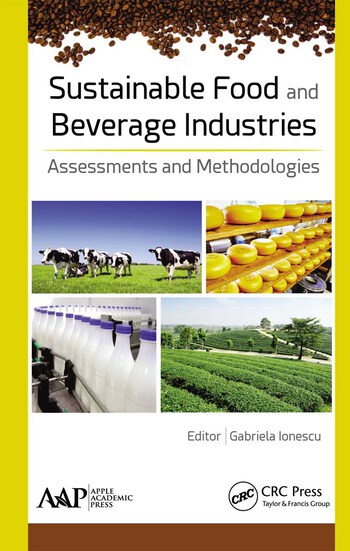Beverage-makers go beyond hydration, deliver on fortification trends
Better-for-you trends, among others, influence beverage fortification

Image courtesy of Rowdy Mermaid
In Disney Channel’s movie “High School Musical 2,” Sharpay Evans wants everything to go according to her plan for the summer. As expressed in her song “Fabulous,” Sharpay demands all things to be just that: fabulous. “I want fabulous / That is my simple request / All things fabulous / Bigger and better and best,” she sings.
Similar to Sharpay, while perhaps not expressed in song, consumers are demanding “better and best” from their beverages. Beverage-makers are working to deliver more with their products, with one prominent trend being better-for-you (BFY) drinks.
Jennifer Berndt, marketing category manager for beverages at Cargill, Minneapolis, shares how BFY trends are influencing fortification in beverages.
“A key shift in the beverage marketplace is the heightened influence of health considerations on purchase behavior,” she says. “Consumers are looking for products that provide a benefit. Whether that’s supporting energy, gut health, cognition, immunity or hydration, there’s a real thirst for beverages that address specific needs.”
Consumers striving to age well are taking an “eat to live” approach, Berndt adds.
“It’s more about quality of life than longevity, as consumers want to feel well and continue doing the things they enjoy,” she explains. “Interestingly, it’s not just middle and older generations prioritizing healthy aging. Younger consumers are being proactive, too.”
Beverages with benefits are popular because consumers view them as an easy and efficient way to enhance their diet, Berndt adds, whether it be through the addition of protein, electrolytes for hydration or ingredients like turmeric, prebiotics or B vitamins.

“At the same time, they’re being more thoughtful and deliberate in their choices,” she says. “That translates into actions like scrutinizing product labels, watching added sugar levels and avoiding artificial sweeteners. As those trends converge, it presents a challenge for beverage brands.
“While consumers are attracted to formulations featuring vitamins, minerals, botanicals and adaptogens, these functional ingredients often bring off-flavors that are hard to mask,” Berndt continues. “At the end of the day, the beverage needs to taste good or consumers won’t repurchase.”
Maria Stanieich, marketing manager at Kyowa Hakko USA, New York, also shares insights impacting fortification trends.
“We’re seeing several trending ingredients and benefits from the supplement space making their way to functional beverages,” she states. “According to our 2024 survey of U.S. immune health consumers, more than half (53%) are more concerned about their immune health compared to two years ago. Additionally, 66% said they’re using more immune health supplements compared to five years ago.”
The marketing manager also notes that, after an ingredient has had success in capsules and gummies, it often makes its way to beverages to support things like gut health, brain health and immunity.
“For example, there’s been a high interest in probiotics in beverages, followed by prebiotics, and now we’re seeing postbiotics grow in demand for their role in gut health and immune support,” Stanieich adds.
Vaughn DuBow, senior director, product portfolio marketing of health and wellness at ADM, shares his observations.
“Perhaps the biggest shift in the past few years is that consumers want to see these benefits across beverage products, which is blurring the lines between different categories,” he says. “For example, we now see energy drinks with performance claims, while sports and active nutrition beverages are including more claims around digestive health.”
Other trends aside from BFY factors are influencing beverage fortification as well. Stanieich lists the desire for convenience and ease of use.
“Consumers want to get supplement-level benefits through foods and beverages,” she says. “Among U.S. cognitive health shoppers, 73% are most interested in using capsules or gummies, but 53% are interested in beverages to support cognitive health. Before heading to work in the morning, imagine grabbing a bar and a ready-to-drink (RTD) coffee with multiple benefits: portable, filling, functional and easy to consume during your commute into the office.”
Cargill’s Berndt notes that consumers still crave natural products.
“They’re reading labels and avoiding artificial ingredients,” she says. “Our research finds two-thirds of consumers are likely to check ingredients on packaged foods and beverages; half say they want to avoid artificial sweeteners.”
ADM’s DuBow notes that consumers also are craving sleep and stress relief.
“On the flip side, support for sleep and stress is also on the rise, with ingredients that can help evoke feelings of relaxation garnering traction,” he says. “Our research shows that consumers perceive green rooibos to be related to support for sleep, stress, and mood.”
Meeting needs through innovation
Beverage makers are addressing these trends in their new product creations.
Kyowa Hakko’s Stanieich shares that brands are taking a multi-function, multi-benefit approach and thinking about how their product can integrate into a consumer’s life, rather than forcing a consumer to adapt their life to the product.
“We’ve found that, for cognitive health shoppers, timing matters,” Stanieich says. “One in three of these consumers said they have a low amount of energy in the morning. Our data also suggests that many cognitive health consumers are likely to have daily struggles with motivation, stability and focus at work and at home.”
Cargill’s Berndt notes that the beverage aisle is “always a hot spot” in terms of innovation.
“Some brands have leaned into a hero ingredient like protein; others are targeting a specific health need like immunity,” she says. “More recently, we’re also seeing brands expand their portfolio to meet consumers’ needs as they change throughout the day. As part of this daypart personalization, brands might offer a beverage with an energy boost to kick start the morning, then help consumers unwind with a drink that promises to promote calm and relaxation.”
Certain ingredients are more in-demand for beverage fortification, offering a variety of benefits that consumer’s desire.
“Protein remains a big draw as consumers associate the nutrient with a raft of positives, from muscle building to satiety,” Berndt says. “Many consumers are trying to hit specific grams of protein to manage their health and rely on protein-fortified beverages to help them reach their goals.”
There’s also a big movement toward sustaining hydration, she notes, especially with sports drinks.
“Electrolytes like potassium and sodium are key, but you’ll also see brands add in antioxidants, vitamins and other ingredients to bolster formulations,” Berndt explains. “Other top nutrients include fiber, vitamin D, calcium and vitamin B12. However, alongside these familiar choices, we’re also seeing heightened interested in ingredients consumers associate with mental and emotional well-being, including botanicals and adaptogens.”
She says that consumers turn to such products under the broad umbrella of health, so there is an expectation that fortified beverages will align with their attitudes toward added sugars and artificial sweeteners.
As part of this daypart personalization, brands might offer a beverage with an energy boost to kick start the morning, then help consumers unwind with a drink that promises to promote calm and relaxation.
“That reality is one of the biggest reasons stevia sweeteners are making their way into so many fortified and functional beverages,” Berndt notes.
When it comes to improving their mental energy, Kyowa Hakko’s Stanieich says that 75% of cognitive health consumers note they’re looking for sustained energy throughout the day.
“We’ve also seen a lot of demand for energy drinks that don’t have the downsides that often come from caffeine, like crashes, jitteriness and difficulty sleeping,” she shares. “For beverage formulators seeking ingredients to support cognitive health and brain function, we offer Cognizin citicoline.”
Similarly, Niki Kennedy, director of insights and content at Glanbia Nutritionals, Chicago, states that, as consumers age, the need for products to support energy increases. However, product acceptance, particularly for energy drinks, declines.
“In energy drinks, we are seeing a shift in the market of disruptive brands targeting a more lifestyle approach to energy, rather than traditional energy messaging,” Kennedy says. “As well, natural energy from super foods is building traction in the market with consumers focused on a more holistic approach to energy ingredients beyond caffeine and sustained energy, versus a quick burst.”
She also notes that the major ingredient tenants of hydration and energy ingredients are not new, but being reimagined in their deliveries.
“Natural energy ingredients are being optimized for bioavailability and stability,” Kennedy explains. “Additionally, some brands are using a blend of active ingredients that, when used together, are more powerful than the sum of their parts.”
Angel Aponte, director food, beverage and pet ingredients at AIDP Inc., shares insights regarding popular ingredients the company offers. Aponte points to Magtein, a brand for memory, mood and focus.
“It has been used in several beverages as a replacement for CBD, as the market changes,” she says. “VegD3, our vegan vitamin D3 is also widely used in beverages. Other emerging ingredient include PreticX, a low dose prebiotic and Keragen-IV, a BFW product for hair, skin and nails.”
Facing the challenges
Despite the interest in fortified beverages, issues might arise when working with various ingredients.
“Formulation challenges for beverage-makers when working with performance-supporting ingredients include stability, solubility, flavor, smell, texture, compatibility, regulatory compliance and cost considerations,” Kyowa Hakko’s Stanieich says. “These challenges can affect product quality and consumer acceptance.”
She notes that the company’s Cognizin citicoline can overcomes many of these challenges.
Cargill’s Berndt highlights that taste is paramount even when developing BFY beverages.
“No matter how many vitamins, minerals or beneficial ingredients you add to a drink, it won’t be successful if it doesn’t taste great,” she shares. “The beverages might enjoy high initial trial rates, but consumers won’t be back for repeat sales.”
Once upon a time, Berndt says that formulators tried to cover up flavor hurdles with sugar, but that approach no longer works in today’s sugar-wary marketplace.
“Artificial sweeteners are a no-go, too, leaving brands to experiment with the growing array of high-intensity stevia-based sweeteners,” she notes. “There’s been so much improvement, especially within stevia product lines, that brands really can walk away from added sugar and artificial sweeteners and still manage all the off flavors inherent in these formulas.”
Berndt notes that solubility is another issue brands must address.
“Protein-fortified beverages, while very much in demand, can present challenges with both flavor and solubility,” she adds. “Fortunately, advances in protein processing technology have enabled ingredient suppliers to push the boundaries. For example, our joint venture partner PURIS created PURIS 2.0 pea protein specifically for beverage applications.”
ADM’s DuBow notes how beverages undergo tough formulation environments, which can impact the efficacy of certain ingredients, especially probiotics and botanical extracts, causing them to degrade over time.
“Additionally, certain botanical extracts and dietary fibers may have off-notes or off-textures,” he says. “Formulators must also keep in mind the potential for separation, flocculation or sedimentation when combining functional ingredients.”
Future fortification ingredients
In terms of anticipating upcoming trends, Kyowa Hakko’s Stanieich says she expects ingredients that provide more than short-term bursts of energy to rise in popularity.
“There’s an increased interest in postbiotics, especially as consumers learn more about the unique benefits they offer that they can’t get from pre- and probiotics,” she adds.
Glanbia’s Kennedy points to creatine as an ingredient with the potential to shake up the functional beverage market.
“Creatine, which seems to be in the middle of a renaissance, remains a staple of hard-core sports nutrition,” she says. “However, recent studies on the impact of creatine on cognitive performance have skyrocketed the ingredient into the forefront of active nutrition.”
Meanwhile, Cargill’s Berndt notes that the future of fortification will see education and awareness help reach more consumers.
“Gut health isn’t new, but the focus on the ‘biotics family — pre- and probiotics — continues to gain steam, as does awareness for the outsized role the gut microbiome plays in the health of other systems, from immunity to the brain,” she says. “More nascent is the idea that beverages can support mood, cognition and even help manage stress. No longer just for supplements, functional ingredients from mushrooms to adaptogens are making their way into all manner of drinks.”
Although trendy ingredients can help a beverage garner consumer trial, Berndt states that the single biggest arbiter of success remains unchanged.
“Consumers want health benefits, but they just don’t want a beverage that tastes ‘healthy,’” she says. “For a brand to win in today’s crowded marketplace, they’ll need to deliver on both trends and taste.”
Looking for a reprint of this article?
From high-res PDFs to custom plaques, order your copy today!










